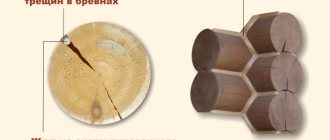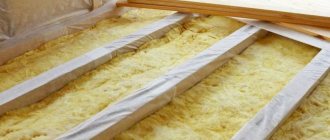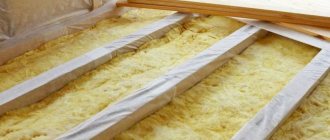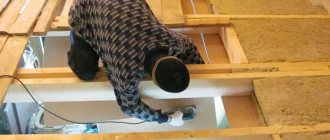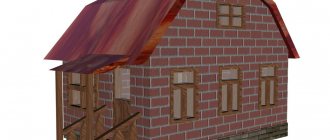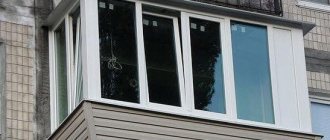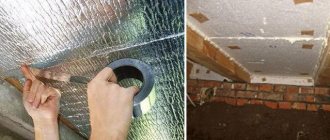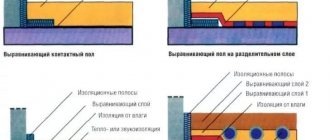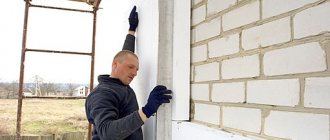How to keep your home warm
1. In the morning, open the curtains and/or blinds to allow sunlight into the house. Glass in a window allows light to pass in, but not back out. In the house, light accumulates, bouncing off walls and furniture, and eventually turns into heat.
2. Use thick (blackout) curtains at night to prevent heat from escaping through the windows. Without sunlight, windows become your enemy. Create thick wallpaper to prevent heat from escaping.
* You can simply use a thick blanket to which a rod or stick is attached to maintain the shape.
Measure your window and find something solid, such as a stiff rod or strong stick, that you can then wrap the curtain around. You can also use an old curtain rod (if you have one).
How to reduce heat loss
You can improve the situation in your apartment with the help of good repairs: install high-quality windows and doors, insulate the walls from the outside using polystyrene foam, replace cast-iron radiators with modern ones and, finally, glaze the loggia.
But if the house is in good condition, repairs have been made, but the room temperature is low, then you should look for hidden heat losses. Inspecting your home with a thermal camera can show all the places where heat is escaping. But you should also carefully examine and explore all the places where heat most often escapes.
- Windows and window sills . Often there are cracks in windows that appear due to: wear of the rubber seals, poor-quality window installation. Often, cracks under window sills left by unscrupulous builders are a source of drafts. If the window sills are constantly cold, condensation appears on the windows - heat escapes through such windows.
- Entrance doors. Doors are often a source of problems. Their seal wears out, cracks appear through which cold air constantly enters the room. Installing a double door will help. Ordinary interior doors, even the cheapest ones, significantly reduce heat loss. This is especially noticeable in private houses.
- Balconies and loggias. Gaps appear in balcony doors. Before the start of the heating season, they must be checked. Glazing the loggia will make the apartment several degrees warmer.
- Radiators heat the external wall. Typically, radiators are installed under the window, close to the outer wall. It heats up the wall a lot. As a result, part of the heat it generates goes outside. In fact, the heat is used to warm the street. It is recommended to cover the wall behind the radiator with foil, then it will not be the wall that will heat up, but the apartment where the heat will go.
- Bridges of cold. “Cold bridges” are areas of a building with lower thermal resistance compared to other areas. That is, they transmit more heat. For example, these are corners, concrete lintels over windows, junctions of building structures, steel reinforcement in walls, and so on. It is difficult to detect them without a thermal imager. If dampness is detected in any corner, condensation appears - this is a dangerous area.
- Ventilation holes . They must be in the kitchen to remove gas combustion products. But ventilation often works the other way around. Instead of removing air from the room to the outside, cold street air is drawn into the room from the street. Installing a hood above the stove with a corrugated pipe for air will help.
How to make the floor warmer
5. Cover the floors with carpets. There is nothing more unpleasant than standing barefoot on a cold floor in the morning. In addition to feeling great, rugs also provide an extra layer of insulation that keeps cold air from rising up from the floor, which means your feet will thank you.
6. Use a sealant (cotton wool or foam, for example) to seal any cracks in the windows. After this, cover the cracks with strips of cotton fabric (the width of each strip is 4-5 cm). This will prevent heat from escaping from your home.
7. It is advisable to have thick, massive doors in your house that will keep you a lot of heat. You can also upholster an old front door with leatherette filled with foam padding.
It is advisable to plaster all cracks with polyurethane foam. If you decide to install a new door, then see if you can keep the old one, because... two entrance doors create an air gap between themselves, and it insulates heat.
Saving heat in the office
Saving energy in the office means taking the same measures as in apartments, schools and kindergartens.
In addition, you can use the heat saving methods suggested below.
- Using carpet on the floor will reduce the amount of heat loss through the floor.
- The use of foam or extruded polystyrene foam tiles for finishing the ceiling will reduce heat loss through the ceiling.
- A fan located under the ceiling allows you to disperse warm air throughout the room, which will make the use of thermal energy more rational.
- Rubber pads attached along the bottom edge of the door leaf allow you to eliminate the gap between the door and the floor. The use of such overlays is especially necessary if additional heaters are used in the office space and the temperature is higher than in the corridor.
The use of all of the above measures will reduce heating costs several times, and most importantly, provide comfortable living, learning and working conditions.
How to keep your home warm
8. Attach a sheet of foil behind the radiator and it will reflect heat back into the room with little heat escaping through the wall. It is worth noting that the gap between the foil and the battery must be at least 3 cm.
9. If for one reason or another you cannot attach a metal foil screen, try insulating the house from the outside. Order insulation of the end wall (as a rule, this is done with special slabs).
10. Shower with the door open (if possible). The heat and moist air created by bathing will raise the air temperature throughout the house.
11. Dry things in the house. Just like swimming with the door open, this method increases air humidity, and you will feel more pleasant and comfortable.
Saving heat in the apartment
Almost all measures to save thermal energy described for a private house can be applied in an apartment.
In addition, the following methods for saving heat are effective.
- Glazing a balcony or loggia gives the same effect as installing an additional window.
- Insulation of a balcony or loggia.
- Adjustment of balcony block doors and timely replacement of seals.
- Insulation of walls from the inside that are adjacent to unheated rooms, for example, an elevator shaft or entrance.
- Using a carpet on the floor will not only make your home more comfortable, but will also reduce heat loss through the floor.
- Insulation of the ceiling from the inside, which is necessary even if there is a heated apartment on the floor above. The ceiling is adjacent to the cold external walls. In addition, it is cooled from the street side.
- After using the oven, leave it open - this will allow you to use the heat accumulated in it to your advantage.
Note that in a well-insulated apartment, heating is sufficient for several hours a day.
In autumn, spring and on warm days of winter, you can do without heating altogether.
To maintain the temperature, the heat that is released during cooking, as well as other physical human activities, is sufficient.
How to choose a heater
There are a few things you should know before purchasing a heater.
First you need to decide what you need it for. Based on this, you should choose how powerful the heater is needed. Find out the area of the room (room). An ordinary apartment with ceilings of 2.75 - 2.8 m needs a heater with a capacity of at least 1 kW for every 10 sq. m.
A big plus will be the presence of a temperature and power regulator in the heater. There are several types of heaters:
15.1 Oil heater
How does he work:
Inside such a heater there are 2 or 3 heating elements that are used to heat mineral oil. This oil has a fairly high boiling point and when it heats up, heat is transferred across the entire metal surface of the device.
With the help of such a heater, the air is heated quite quickly, and the oil heater does not dry out the air. It can be equipped with a thermostat, with which the heater turns off when the temperature reaches a set level.
15.2 Convector
How does he work:
Cold air is passed through the heating element and heated, and then exits through the grilles located in the upper part of the device. An additional source of heat is the convector body, which also heats up. But you should place the heater away from furniture, because... a warm case can ruin it.
Convectors can be mounted to the wall or placed on special legs. The device is quite safe, because its heating element is hidden inside the housing. If the convector has a thermostat, it can operate continuously.
The only negative is that the heater warms the room slowly. It should be used to maintain the desired temperature.
15.3 Heat fan
How does he work:
Inside this heater there is a thin spiral that gets very hot. The heat created by heating the coil is distributed throughout the room using a fan.
The air in the room heats up quite quickly, and the device itself is easy to carry, because it's pretty light. Typically, a heat fan is used in offices.
But it is worth noting that the device dries out the air, which in turn is harmful to health. It is not advisable to use a heat fan where there is an asthmatic person. Another disadvantage of such a device is the constant noise during its operation.
15.4 Infrared heater (quartz emitter)
How does he work:
This device, unlike others, heats the objects around it, not the air. Further heating of the room occurs thanks to the heat emanating from heated floors, walls and furniture. This allows you to save electricity, because the device itself may not work, but the room continues to be warm.
If savings come first, then you should choose just such a heater. But you should know that infrared quartz emitters are the most expensive and require a specialist to install them.
Simple but useful tips
There are also simple ways to help keep heated air indoors even more efficiently in winter:
- Place foil between the wall and the radiator, which will reflect heat into the room;
- While showering, leave the bathroom door open - heated air will flow into the room;
- Heavy, blackout curtains block sunlight, which can also heat the room. By covering the radiators, they prevent warm air from entering the room. But at night, thick curtains, on the contrary, prevent cold air from entering the room. There should be no obstacles in the way of heat from the batteries, such as bulky furniture or curtains made of dense materials;
- Carpet as a method of insulation. A high-pile carpet allows you to insulate the room and retain heated air, so in winter it is recommended to cover your apartment with carpets and rugs.
Finally, no one has canceled any kind of radiators and heaters. Electrical appliances increase the consumption of energy resources, but effectively and quickly allow you to raise the temperature in the room in winter and warm up cold air.
Compliance with construction technology as the main method of heat conservation
The simplest and most effective way to keep warm in a wooden house in winter is quite simple. To implement it, it is necessary to carefully follow construction technology. In this case we are talking about several of the most significant points:
- Correct choice of project and size of logs. Obviously, thicker logs should be used for the northern regions of the country than for the southern ones;
- High-quality production of rounded logs, which is deservedly considered one of the most common lumber today, as well as its adjustment during installation;
- Proper use of interventional insulation;
- Connections of individual logs in the corners of the log house “into a bowl”, “into a paw” or “in a warm corner” with exact fulfillment of technology requirements;
- Carrying out work on insulating basement and attic floors, which are carried out during the construction process;
- Timely implementation of two stages of caulking, which allows you to seal the cracks and cracks that arose during the shrinkage process;
- Use of high-quality and airtight window and door fillings.
Compliance with each of the listed requirements during construction will allow you to maintain heat in a wooden house without any additional measures. Although the need for them may still arise.
The need and methods of additional insulation
Quite often, in order to retain heat in the log house, the owner decides to add additional insulation. Typically, such work concerns three main parts of the building: walls, floor and ceiling. The technology for their implementation can differ quite a lot, as well as the materials used. The most commonly used for additional insulation today are:
- Mineral wool. The most popular insulation material, which is actively used both for walls and ceilings of wooden houses. The main advantages of the material are its affordable price, ease of use technology and excellent insulation parameters;
- Styrofoam. The second most common insulation material, which, compared to mineral wool, has a significant drawback - flammability. In terms of other characteristics, it is practically in no way inferior and is used both for walls and floors with ceilings;
- Modern insulation materials, for example, penofol, penoplex, extruded polystyrene foam, etc. They are used more and more every year. The main advantages include low thermal conductivity, affordable cost and ease of use;
- Expanded clay. It is still used quite often, mainly for insulating floors or attic floors. The advantages of this material are obvious - low price and availability. The disadvantage is the insufficient level of insulation parameters, requiring a large layer thickness.
The choice of a specific material depends on several factors. These include the tasks facing the work manufacturer, the type of insulated structure and the financial capabilities of the owner. It is important to note that wall insulation is almost always carried out from the outside and is accompanied by the installation of an external decorative layer, which increases the aesthetic parameters of the building.
The sealant will retain heat
The physico-chemical properties of acrylic sealants for wood allow the treated walls to be resistant to moisture and biological damage and at the same time to be vapor permeable. In other words, while protecting the surface, they preserve one of the valuable natural properties of wood - the ability to remove excess moisture.
If the composition is applied correctly, the structure will need to be re-sealed only after 25-30 years.
For comparison, insulation of seams with moss, felt or jute is carried out once every 10 years, and birds and insects can reduce this period by half.
Warm seams created with the help of sealant will reduce the heat loss of a wooden house and allow you to comfortably survive the harshest winters.
Cozy, comfortable living in a private house requires a lot of care from the owners. So the coming cold took us by surprise: it was blowing from the window frames, cold was blowing from the walls, the wind was blowing in the chimney, there were snowdrifts in the attic. How can you keep your home warm in affordable, ergonomic ways that won’t put a big dent in the family budget? We offer you several simple solutions to this problem.

